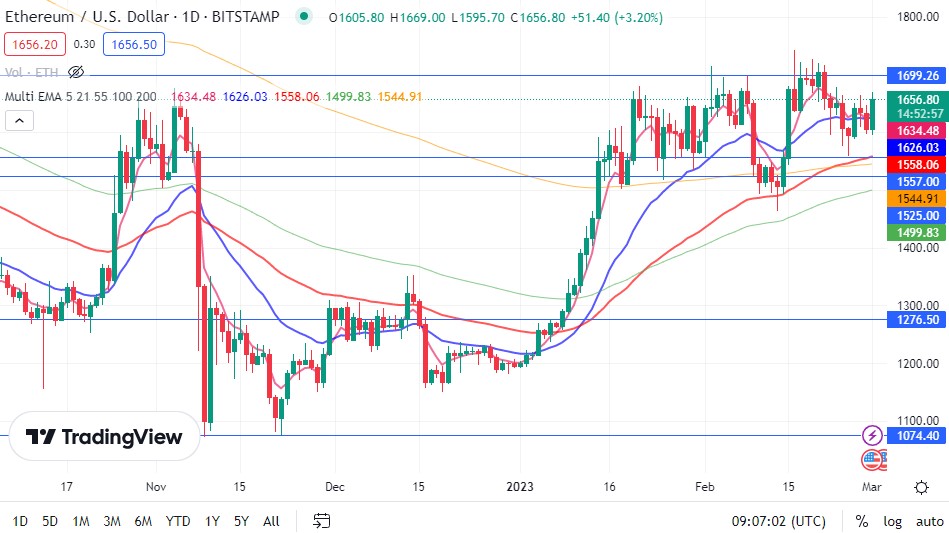Ethereum has consistently shown remarkable performance, capturing the attention of both seasoned investors and newcomers. By understanding Ethereum’s moving averages, one can gain valuable insights into its price patterns and trends. Analyzing these indicators reveals important clues about Ethereum’s future projections. With the right technical analysis techniques, you can better navigate the complex Ethereum market and make informed investment decisions.
Understanding Ethereum’s Moving Averages

Understanding moving averages is crucial for analyzing Ethereum’s price movements. Moving averages help smooth out price data over a specified period, providing a clearer view of trends. Typically, analysts use two types of moving averages:
-
Simple Moving Average (SMA): This is the arithmetic mean of Ethereum’s price over a given number of days.
- Example: A 50-day SMA adds up the closing prices for the last 50 days and divides by 50.
- Exponential Moving Average (EMA): This gives more weight to recent prices, making it more responsive to recent price changes.
Key Differences:
| Feature | SMA | EMA |
|---|---|---|
| Calculation Method | Simple Arithmetic | Exponential Weighting |
| Sensitivity | Less Responsive | More Responsive |
| Use Case | Long-Term Trends | Short-Term Trends |
How Moving Averages Affect Ethereum:
- Support and Resistance Levels: Moving averages often act as support or resistance levels for Ethereum. Prices may bounce off these averages, indicating strong trends.
- Trend Identification: When Ethereum’s price crosses above a moving average, it may signal an uptrend. Conversely, crossing below might indicate a downtrend.
Understanding these moving averages can provide invaluable insights into Ethereum’s market behavior, helping investors make informed decisions.
Price Patterns and Trends in Ethereum
Understanding the price patterns and trends in Ethereum can provide valuable insights for investors and traders. Ethereum often exhibits specific patterns that can signal potential price movements.
Common Price Patterns in Ethereum:
- Head and Shoulders: This pattern often indicates a reversal in the current trend. It consists of three peaks, with the middle peak being the highest.
- Ascending Triangle: Characterized by a rising lower trendline, this pattern suggests an upward breakout is likely.
- Descending Triangle: With a descending upper trendline, this pattern often signals a downward breakout.
Recent Trends in Ethereum:
- Rising Trading Volume: Increasing volume usually accompanies bullish movements, suggesting strong market interest.
- Support and Resistance Levels: Ethereum frequently tests key support and resistance levels, providing entry and exit opportunities.
| Pattern | Signal | Likelihood |
|---|---|---|
| Head and Shoulders | Trend Reversal | High |
| Ascending Triangle | Bullish Breakout | Moderate to High |
| Descending Triangle | Bearish Breakout | Moderate to High |
By closely monitoring these patterns and trends, you can make more informed decisions about Ethereum. Remember, technical analysis involves interpreting historical data to forecast future performance. Thus, staying updated on current market conditions is crucial.
Future Projections for Ethereum Based on Technical Indicators
When projecting the future price movements of Ethereum, technical indicators play a crucial role. These indicators help traders anticipate trends based on historical price data and market behavior.
Key Indicators to Watch:
Moving Averages:
- Simple Moving Average (SMA): This calculates the average price over a specific period, smoothing out short-term fluctuations.
- Exponential Moving Average (EMA): Places more weight on recent prices, making it sensitive to new information.
Relative Strength Index (RSI):
- Measures the speed and change of price movements.
- An RSI above 70 suggests Ethereum is overbought.
- An RSI below 30 indicates it could be oversold.
Bollinger Bands:
- Consist of a moving average and two standard deviations above and below it.
- These bands help indicate volatility and potential price reversals.
Comparison of SMA and EMA:
| Indicator | Sensitivity to Price Changes | Best For |
|---|---|---|
| SMA | Lower | Long-term trends |
| EMA | Higher | Short-term trends |
Projections Based on Current Indicators:
- If Ethereum’s price remains above its 50-day EMA, it signifies a bullish trend.
- A downward crossing of the 200-day SMA could point to a bearish reversal.
- A high RSI, combined with narrow Bollinger Bands, might foresee a price correction soon.
By closely monitoring these technical indicators, traders can make informed decisions about future Ethereum price movements.
Frequently Asked Questions
What is technical analysis and how is it applied to Ethereum?
Technical analysis is a method used to evaluate and forecast the future price movements of an asset, in this case, Ethereum, by examining statistical trends derived from trading activity, such as price movement and volume. Analysts use various tools and indicators, like moving averages, Relative Strength Index (RSI), and MACD to identify patterns that may suggest future price behavior. For Ethereum, this involves analyzing its past market data to make informed predictions about its potential performance.
What does it mean when Ethereum is "on averages"?
When Ethereum is said to be "on averages," it typically means that its price is hovering around important moving average levels. Moving averages are commonly used in technical analysis to smooth out price data over a specified period, creating a single trend line. For instance, if Ethereum is on its 50-day moving average, it indicates that the current price is approximately equal to its average price over the last 50 days. This can signal support or resistance, which are key levels traders watch for potential buying or selling opportunities.
How can moving averages impact Ethereum’s price movement?
Moving averages can significantly impact Ethereum’s price movement by serving as dynamic support or resistance levels. When the price stays above a specific moving average, it is often seen as a bullish sign, suggesting upward momentum. Conversely, if the price falls below a moving average, it may indicate bearish momentum. Traders frequently use these averages to make decisions about entering or exiting positions, contributing to the cryptocurrency’s overall market sentiment and potential price fluctuations.
Why do traders use indicators like RSI and MACD in analyzing Ethereum?
Traders use indicators like the Relative Strength Index (RSI) and Moving Average Convergence Divergence (MACD) to gain deeper insights into Ethereum’s market dynamics and identify potential trading opportunities. RSI helps determine whether Ethereum is overbought or oversold, which can indicate potential price reversals. An RSI above 70 means Ethereum might be overbought, while below 30 suggests it might be oversold. MACD, on the other hand, helps to spot changes in the strength, direction, momentum, and duration of a trend. By combining these indicators with other analytical tools, traders aim to make more informed and strategic decisions.







